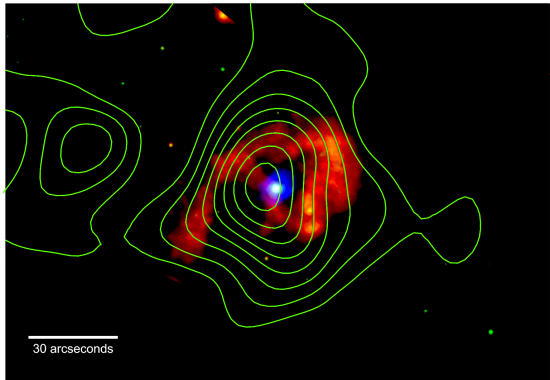
December 8, 2020
What energizes this nebula to such extremes?
Picture of the Day articles note that many structures in the galaxy are active energy sources, ejecting charged matter from their poles, leaving long braided tails, or revealing formations of tightly bunched filaments.
A detailed image of Eta Carinae reveals a distinctive hourglass shape resulting from intense plasma discharges. Eta Carinae is a binary system with a mass about 150-times that of the Sun. However, in contrast, it is shining with four-million-times the Sun’s brilliance, indicating high current density in the stellar z-pinch.
Schoolchildren are taught that one should not gaze at an electric arc without eye-protection, since the brilliant light also emits intense ultraviolet that can damage the retina. The arc light from Eta Carinae is so bright that it generates X-rays powerful enough to be detected on Earth, 7500 light-years away. Eta Carinae also erupted with a flash of visible light, brighter than the Moon, in the 1800s. It then faded from visibility until 1941 when it slowly began to brighten to a naked-eye object. The variability can be attributed to the motions of two giant stars at the heart of the system.
Astronomers believe that Eta Carinae’s twin giants are “blowing off wind” with such high velocity that they create X-rays. This is said to be caused by “kinetic shock”, even though the “wind” is ionized particles. According to researchers, as electrons bounce back and forth in the magnetic fields they are accelerated until they collide with low-frequency photons and give them additional energy, creating the X-ray emissions.
Recently, astronomers using the NuSTAR telescope announced that charged particles are boosted to near the speed of light by the aforementioned shock waves. For years, conventional theories relied upon gravity and acceleration as the only way for cosmic rays to be produced in space. Instead of “billiard ball physics” and “wind”, Eta Carinae is a remarkable confirmation of the Electric Star hypothesis.
In 1968, Dr. Charles Bruce proposed that planetary nebulae, like Eta Carinae, are electric discharges. Since it is part of a galactic circuit feeding power into the stars, the nebula exhibits characteristic bipolar form along the current axis, with a toroid around the equator. As previously written, Eta Carinae’s output is largely absorbed by dust. This explains the high temperatures far from the star.
Instabilities in its plasma environment can be seen in the dark filament to the right of Eta Carinae. Those bursts of energy cause supernova-sized exploding double layers (the “bubbles” throughout the nebula). Double layers accelerate electrons and ions to relativistic velocities, as mentioned. Electrons spiral in the magnetic fields, emitting synchrotron radiation. Slower electrons emit radio waves. The highest energy particles reach escape velocity: cosmic rays.
Stephen Smith
The Thunderbolts Picture of the Day is generously supported by the Mainwaring Archive Foundation.












